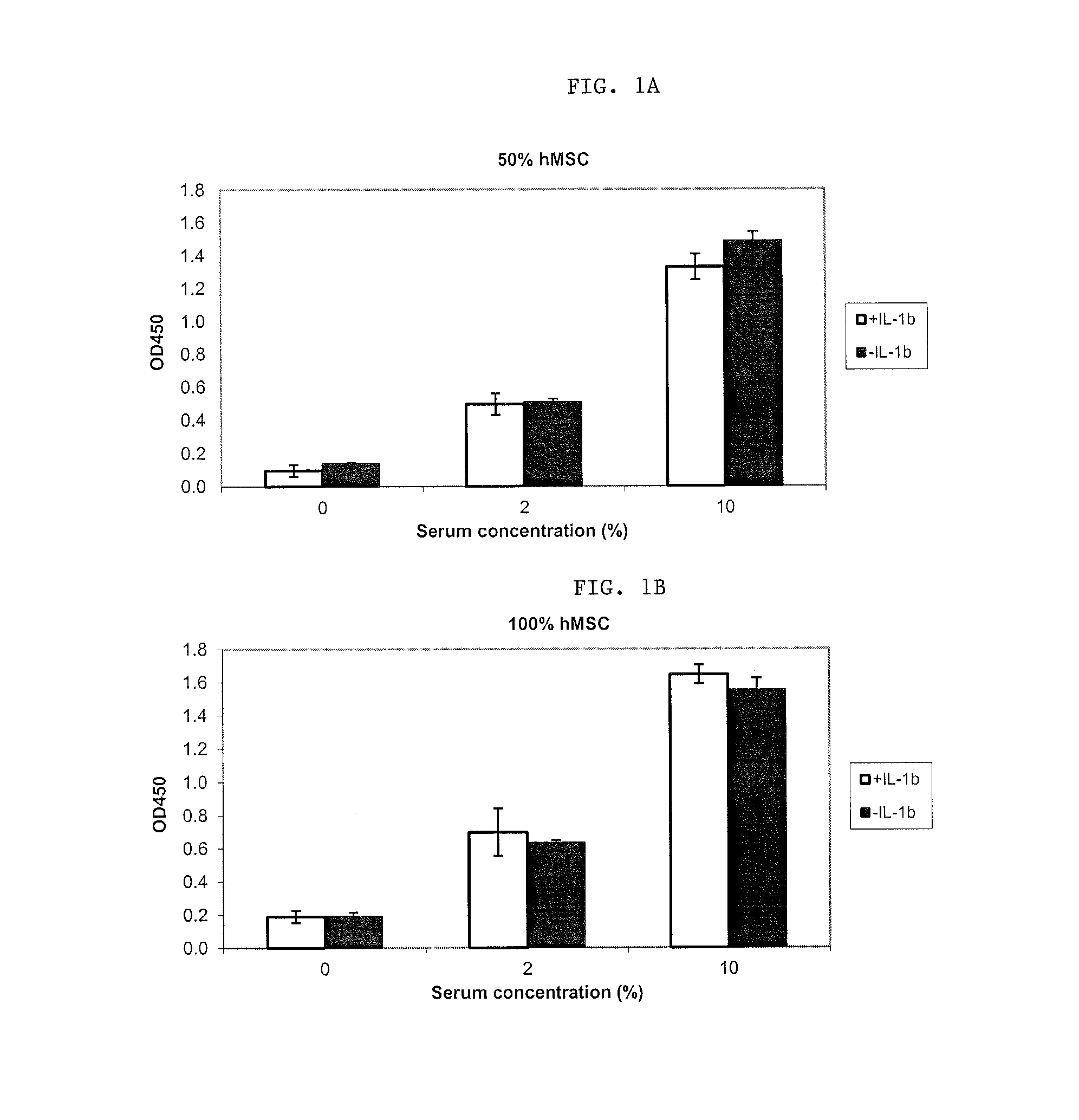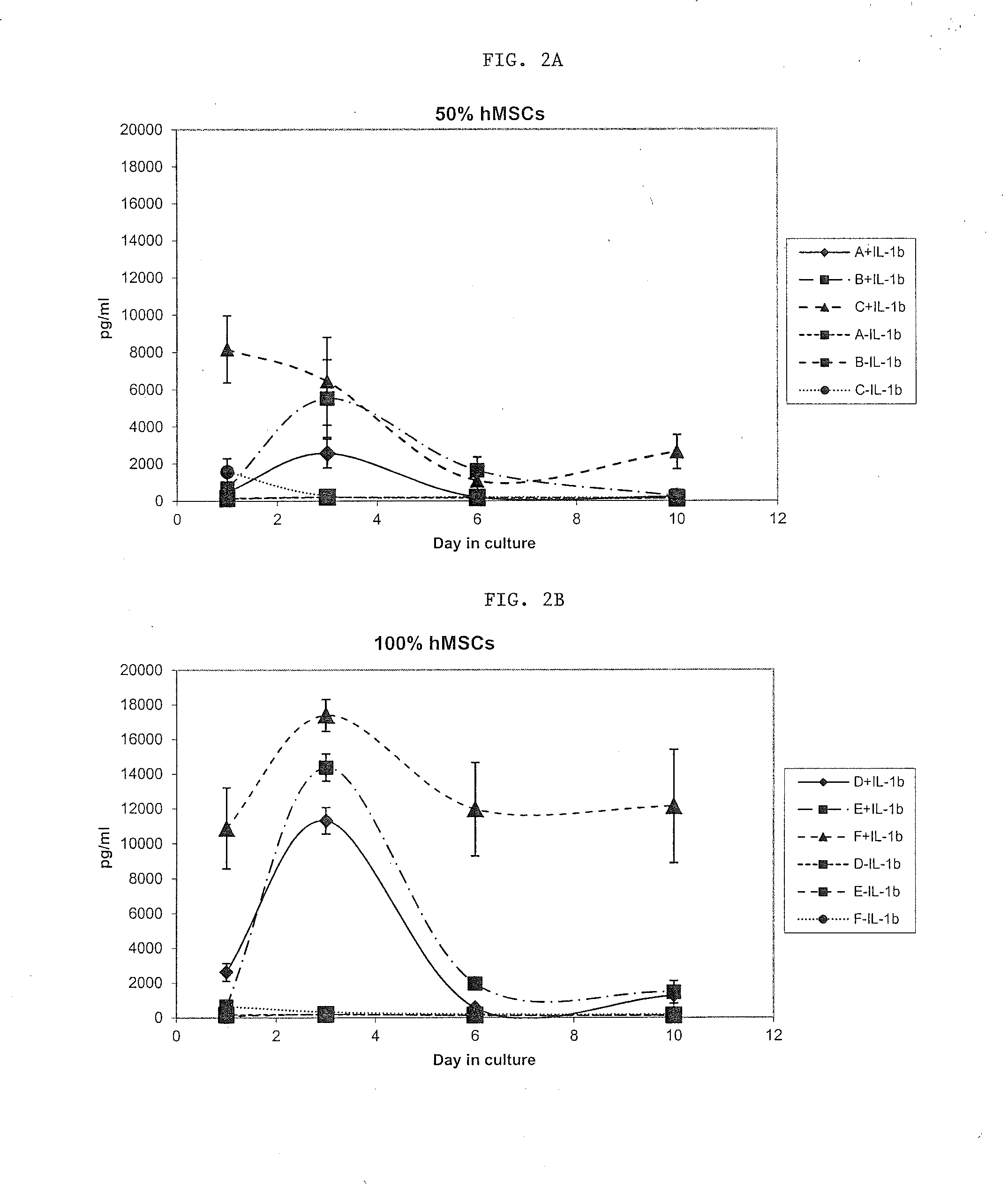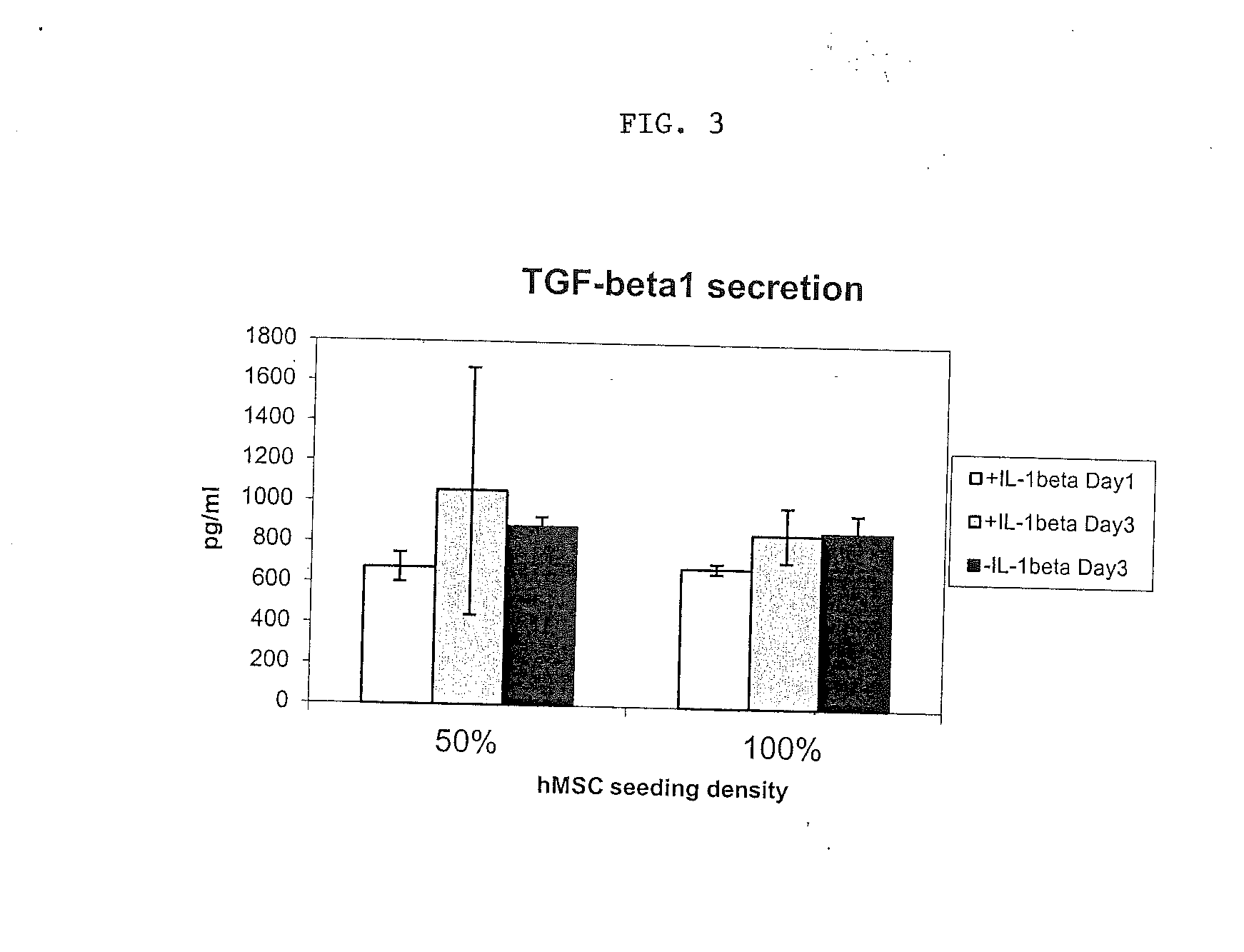Primed stem cells and uses thereof to treat inflammatory conditions in joints
a technology of stem cells and inflammatory conditions, applied in the field of stem cells with primed stem cells, can solve the problems of limited repair capacity, reduced capacity to protect and cushion bone ends, and degeneration of articular cartilage, so as to prevent or expedite alleviation, enhance positive biological processes, and enhance primed stem cells
- Summary
- Abstract
- Description
- Claims
- Application Information
AI Technical Summary
Benefits of technology
Problems solved by technology
Method used
Image
Examples
example 1
[0051]The effect of exposing cells to an inflammatory environment in vitro was evaluated using ex vivo synovium and cartilage explant models. Synovium and cartilage tissues were explanted from pig animals and exposed to IL-1β using the following protocol and groups:
[0052]In this model, IL-1β induced PGE2 and TNFα production in synovium explants. IL-1β induced PGE2 production and GAG release in cartilage explants. Following the validation of the ex-vivo model, human mesenchymal stem cells (passage 3, commercially available from Lonza, Inc.) were added to the explants.
[0053]In synovium explants, hMSCs appeared to decrease endogenous but not IL-1β-induced production of PGE2 and to reduce IL-1β-induced TNFβ production. In cartilage explants, hMSCs reduced endogenous PGE2 production but increased IL-1β induced PGE2 production while had little effect on GAG release.
[0054]hMSCs were then primed in the presence of IL-1β at a concentration of 10 ng / ml.
[0055]As illustrated in FIGS. 1A and B, ...
example 2
[0059]Male Sprague Dawley rats (191-232 grams in weight, n=15 / group) were injected with 2 mg of MonolodoAcetate (MIA) (40 μl) on day 0 on their right knees. This MIA model is an art-recognized model to evaluate OA therapies. Animals were given a single intra-articular (IA) dose of hyaluronic acid (HyA) or saline with or without stem cells one week after surgery. Animals were terminated at three weeks post surgery.
[0060]Treatment groups were as follows:
TreatmentGroup(40 μl / joint)Cell# / kneePrimingCarrierHAHA—−—Low cell+ / HAMSC1 × 106+HALow cell− / HAMSC1 × 106−HAHigh cell+ / HAMSC5 × 106+HAHigh cell− / HAMSC5 × 106−HASalineSaline—−—Low cell+ / salineMSC1 × 106+SalineLow cell− / salineMSC1 × 106−SalineNormal ctrl*——−—
[0061]Cells were rat bone marrow derived mesenchymal stem cells (GIBCO®) cultured and passaged at P3. Priming of the cells was conducted by incubating the cells in IL-1β for (10 ng / ml) 4 days.
[0062]Gait analysis, incapacitance (IC) testing, and knee diameter measurement were performe...
PUM
 Login to View More
Login to View More Abstract
Description
Claims
Application Information
 Login to View More
Login to View More - R&D
- Intellectual Property
- Life Sciences
- Materials
- Tech Scout
- Unparalleled Data Quality
- Higher Quality Content
- 60% Fewer Hallucinations
Browse by: Latest US Patents, China's latest patents, Technical Efficacy Thesaurus, Application Domain, Technology Topic, Popular Technical Reports.
© 2025 PatSnap. All rights reserved.Legal|Privacy policy|Modern Slavery Act Transparency Statement|Sitemap|About US| Contact US: help@patsnap.com



